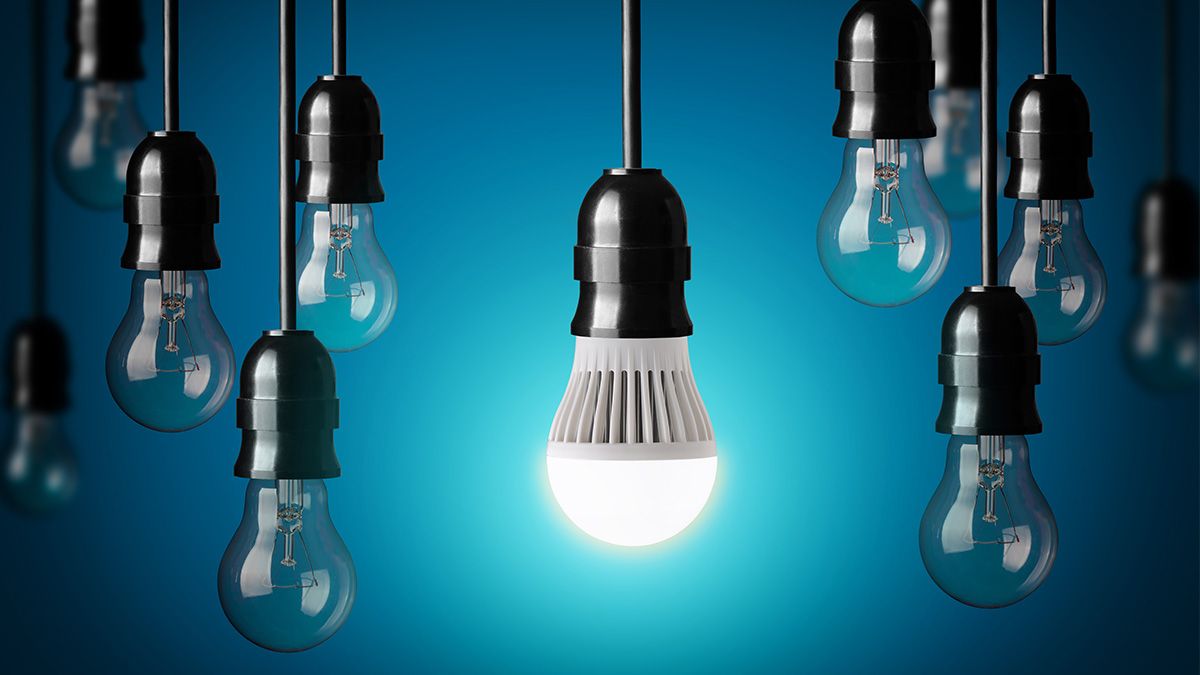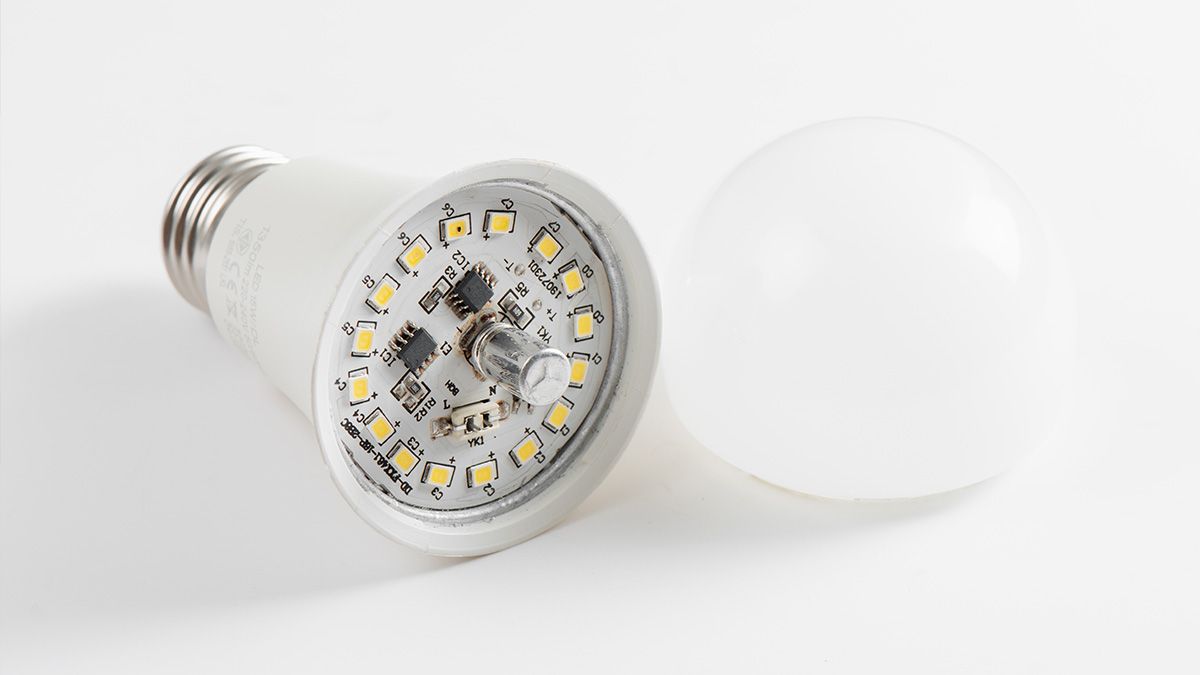It might seem like a question with an obvious answer, but LED bulbs don't burn out the same way traditional incandescent bulbs do. Here's what happens instead.
LEDs Don't Burn Out, They Fade Away
When it comes to longevity, incandescent lights follow the live big, die young philosophy espoused by Neil Young in his 1978 hit "My My, Hey Hey" when he sang "It's better to burn out than to fade away."
When an incandescent bulb reaches the end of its life cycle, the filament burns out, often with a dramatic puff of smoke within the bulb. Depending on how powerful the lightbulb is, you might even hear the failure like the crunch of an old-timey flash bulb.
LED bulbs work a lot differently and lean in hard on the fade-away bit. An incandescent bulb works by sending an electrical current through a filament until the filament glows red hot and emits light. LEDs are light-emitting diodes. By contrast, they emit light when a specialty diode is excited by electricity.
Barring some catastrophic failure of the electrical system powering the diode, the diode will never "burn" out. It simply becomes less and less efficient over time. For instance, when you read the documentation for an LED bulb, light strip, or any other LED lighting gear, you'll see lifespan estimates like "lasts for 50,000 hours."
That estimate doesn't indicate that at 50,000 hours of operation, the LED will pop and burn out. The estimate indicates that by 50,000 hours, the LED will have lost enough efficiency that you would notice it wasn't as bright as it used to be. In theory, an LED light bulb could last for a million hours or more, but in the end, the bulb might only emit as much light as a dim night light bulb---or so little light it was only visible as a faint glow in a pitch-black room.
How much dimmer? The industry term for the loss of light over time is "lumen depreciation," and it is expressed as a percentage indicating the remaining luminance of the LED.
If an LED is labeled as lasting for 50,000 hours with an L70 rating, that indicates that at 50,000 hours, the LED will be 70% as bright as it was (or, to state the inverse, it will be 30% dimmer). An L70 rating is an industry baseline, so if you don't find any L-rating for a bulb, it's safe to assume it's probably L70.
If you want bulbs with a longer effective lifespan, it pays to examine the box closely or look the product up online to get better technical specs. Many nicer LEDs bulbs have L80, L90, or even "> L90" ratings indicating that after the stated lifespan, say, 50,000 hours, they will be 80%, 90%, or greater than 90% as bright as they were when new.
When reading the fine print, be sure not to confuse the L-rating with the CRI (Color Rendering Index) rating, which is also commonly expressed with similar numbers like CRI-80, CRI-90, and CRI-90+. These numbers refer to how closely the artificial light source mimics pure midday sunlight, and the closer to 100 the number, the better.
They Don't Burn Out, But Their Circuits Can Fail
If an LED doesn't burn out but instead slowly fades away over years and years of use, why do they sometimes appear burned out?
The culprit is almost always the internal circuitry within the bulb housing and not the LED itself (though the LED may ultimately become a casualty of the circuitry failing).
Unlike incandescent bulbs, LED bulbs have more going on under the hood. Within an incandescent bulb, there's not much more than a simple circuit with a filament in the middle to produce light. Inside an LED bulb, on the other hand, there is a small circuit board with multiple components.
When an LED bulb "burns out," it's almost always because some component on the circuit board has failed, either because of a manufacturing defect or because the bulb overheated.
If you've ever wondered why the fine print that comes with LED bulbs is so insistent that you don't put them in enclosed fixtures or you can't figure out why those LED bulbs you put in some old-school ceiling can lights keep burning out, there's your answer. In an enclosed space, the heat builds up and has the potential to cook the electronics inside the bulb.
So if you want to avoid wasting money on LED bulbs or light strips, it's wise to invest in quality products from established companies and always read the fine print. If the bulbs you're looking at aren't recommended for can-light retrofits, for example, look at a product designed specifically for a can-light retrofit instead. In the end, you'll get exactly what you want and save money in the process.


